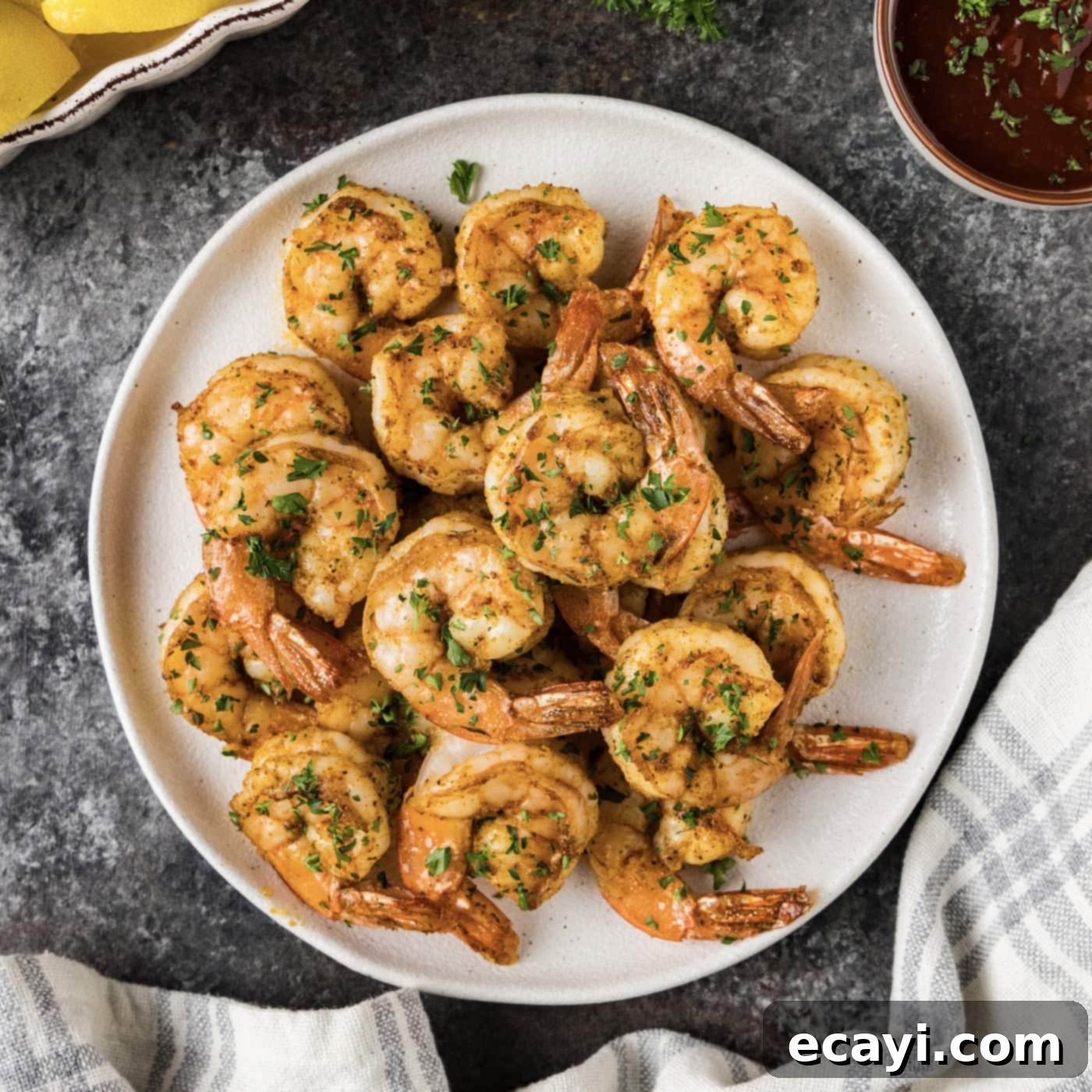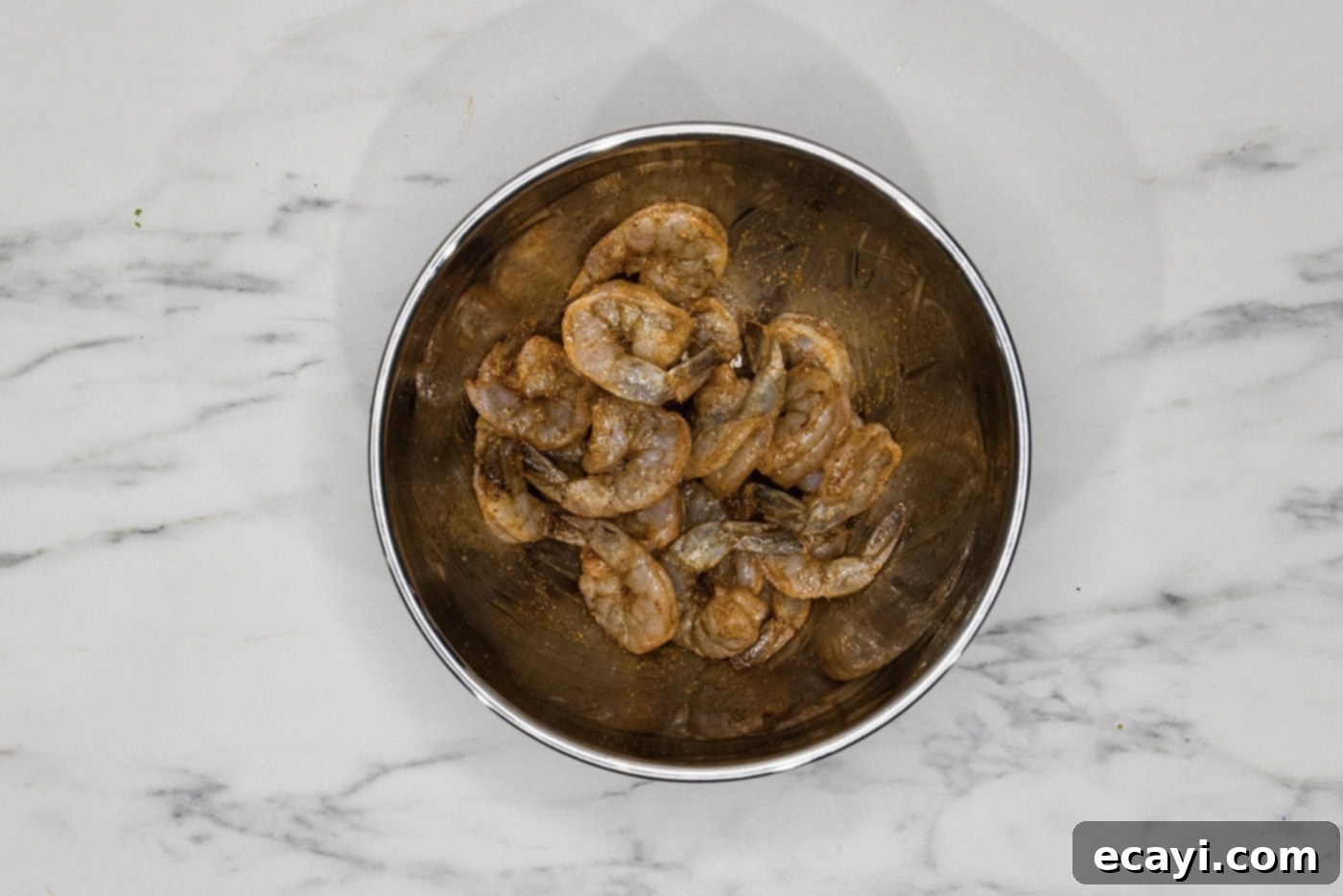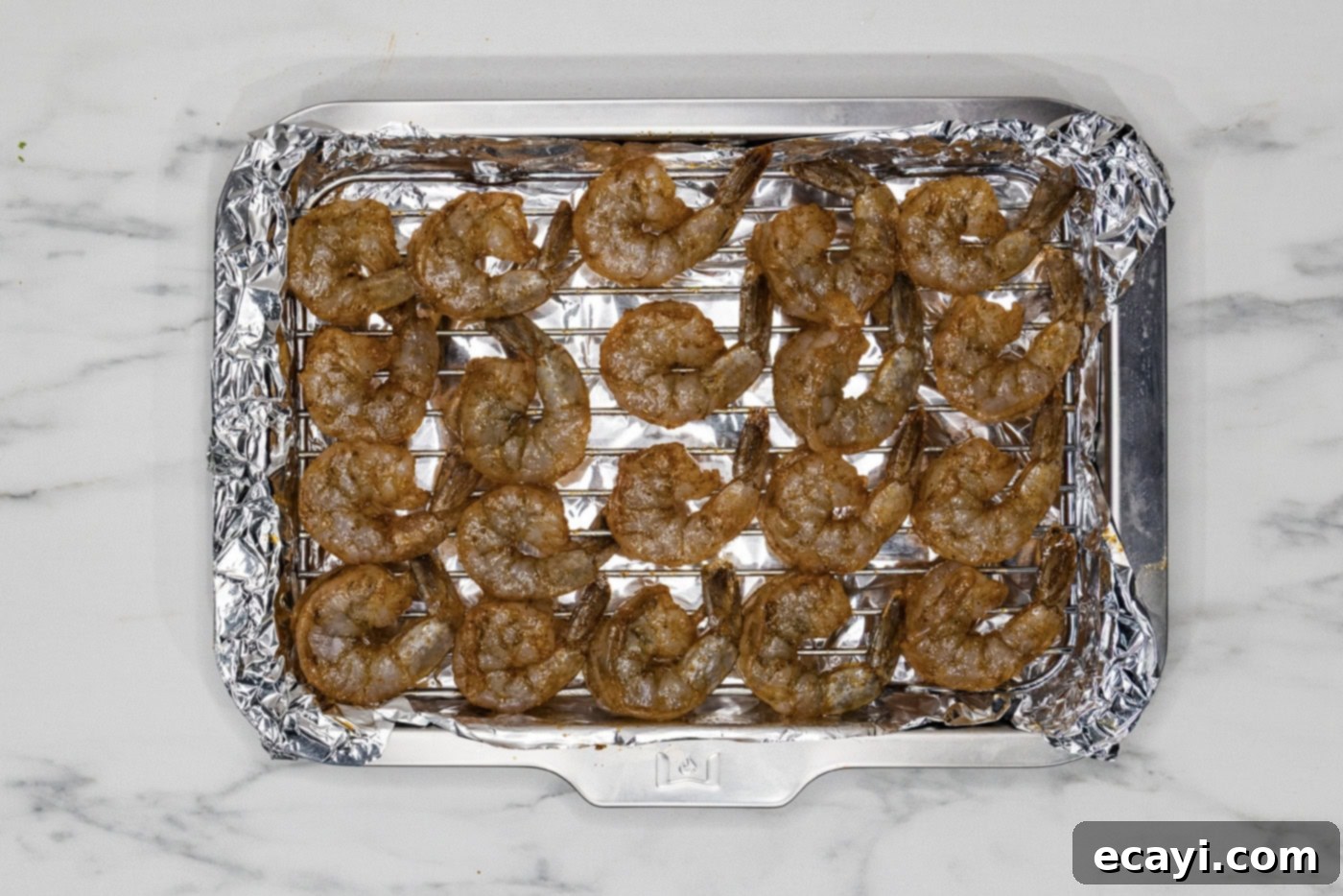Quick & Easy Broiled Shrimp: Perfectly Juicy, Flavorful, and Ready in Minutes!
Craving a delicious, healthy, and incredibly fast meal? Look no further than this fantastic broiled shrimp recipe! In less than 10 minutes of active cooking time and under 20 minutes total, you can have perfectly cooked, plump, and juicy shrimp on your table. Broiling shrimp is a game-changer for busy weeknights, offering a quick sear and a tender interior that’s hard to beat. Whether you’re tossing them into vibrant pasta dishes, fresh salads, sizzling fajitas, or tucked into warm taco shells, this versatile recipe is sure to become a staple in your kitchen.
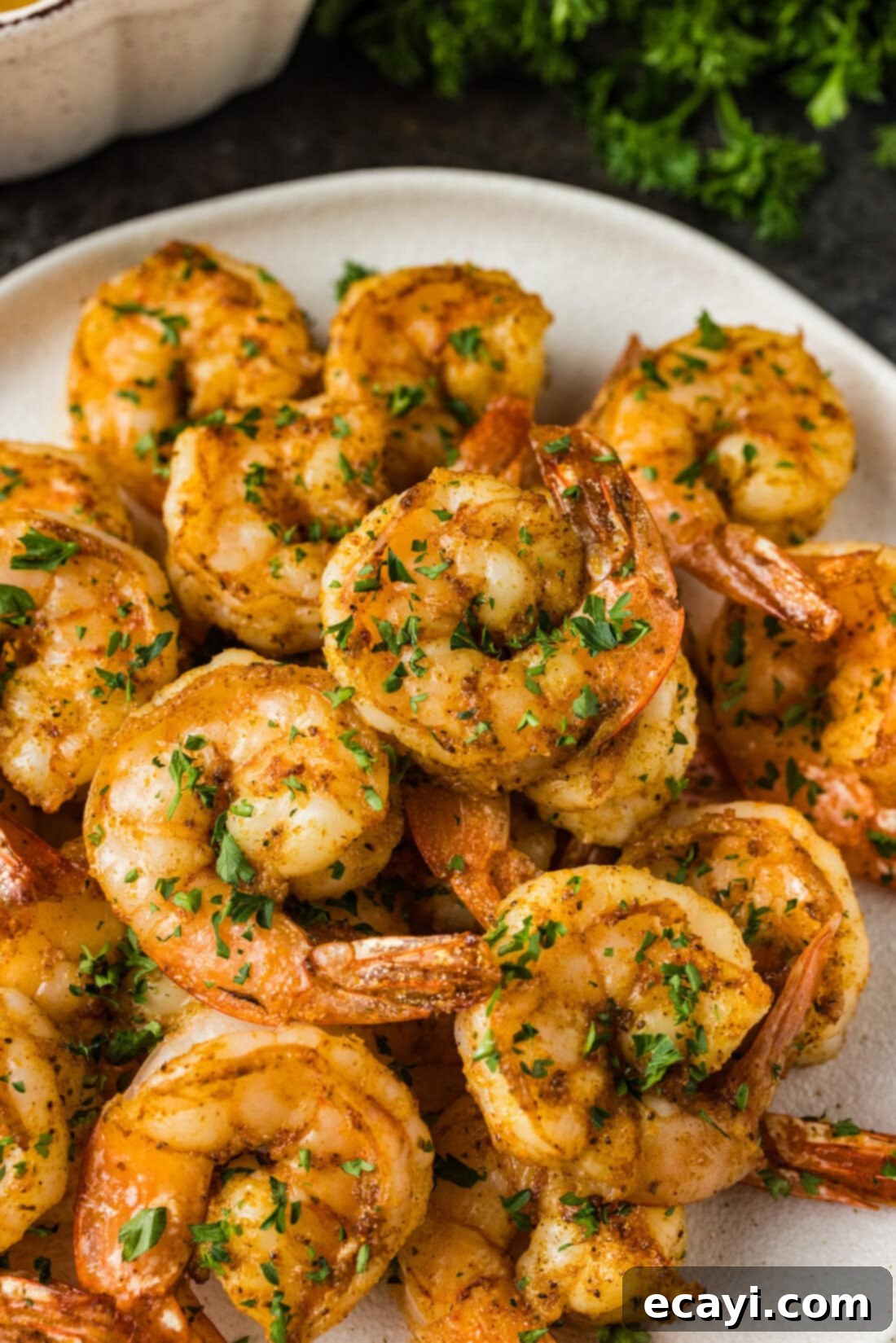
Why Broiled Shrimp is Your New Go-To Recipe
When we say broiled shrimp is easy, we mean it’s truly effortless. This method involves minimal prep and delivers maximum flavor with incredible speed. Unlike other cooking methods that might require more attention or longer cook times, broiling cooks shrimp under intense, direct heat, creating a slightly crisp, caramelized exterior while keeping the center wonderfully juicy and tender. This high-heat cooking technique ensures that your shrimp are cooked through in just 5-7 minutes, making it ideal for those busy days when you need a nutritious meal on the table in a flash.
The beauty of broiling lies in its efficiency and the delicious results it yields. The direct heat caramelizes the seasonings, enhancing their flavor and creating an irresistible aroma. It’s a foolproof way to achieve that perfect bite-sized texture every time, avoiding the rubbery fate of overcooked shrimp. While there are many fantastic ways to prepare shrimp, such as sautéing, grilling, or baking, broiling stands out for its speed and the distinct crisp-tender texture it imparts. With the right preparation, you can achieve restaurant-quality shrimp right in your home kitchen, no matter your preferred cooking method.
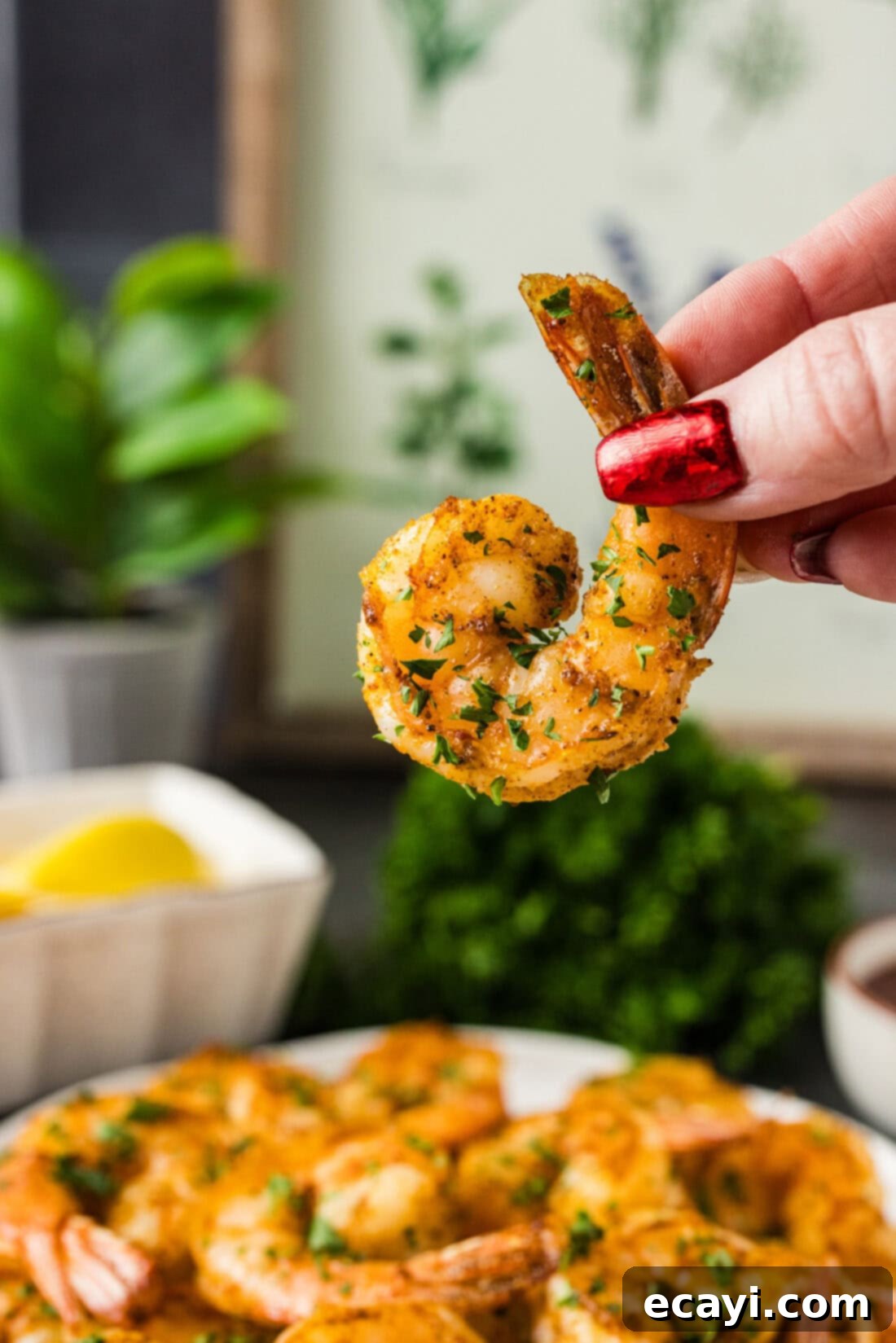
Key Ingredients for Flavorful Broiled Shrimp
This recipe calls for a simple yet effective list of ingredients that come together to create perfectly seasoned and cooked shrimp. You’ll find all precise measurements and detailed instructions in the printable recipe card at the very end of this article.
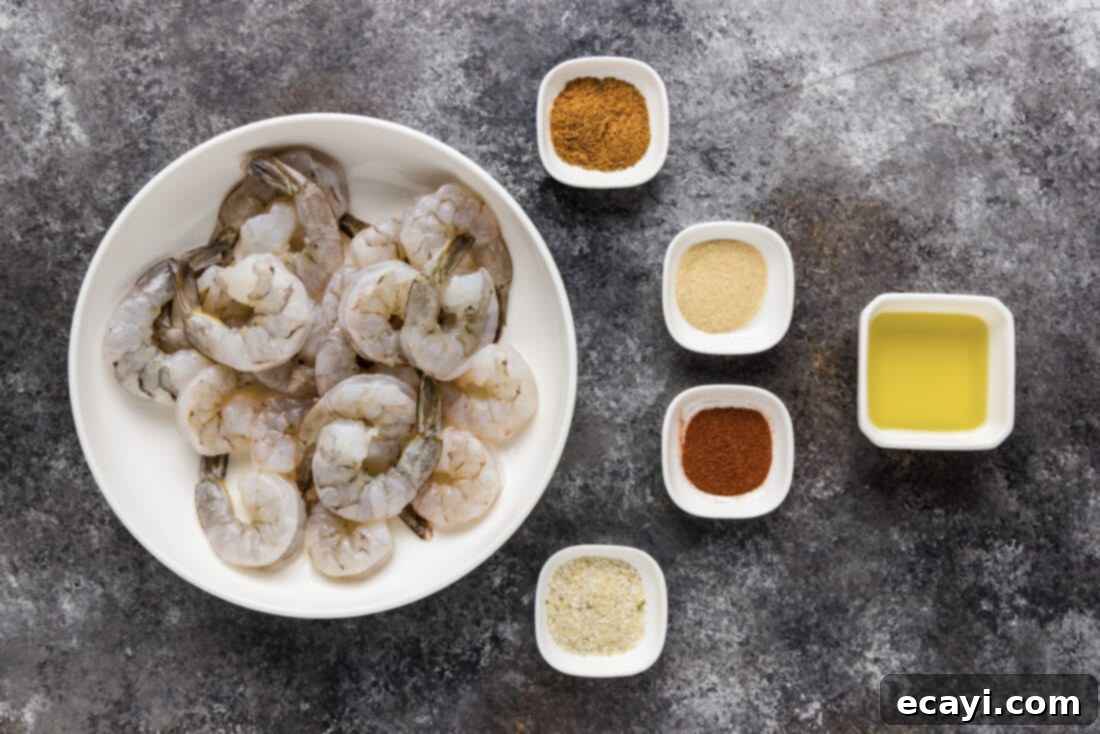
Ingredient Spotlight & Customization Tips
Let’s dive deeper into the ingredients and how you can tailor this recipe to your taste:
SHRIMP: The star of our dish! We typically opt for large or extra-large shrimp for broiling, such as Gulf shrimp or tiger shrimp. Their size ensures they cook evenly under the broiler and remain wonderfully plump. You can use fresh or frozen shrimp, but if using frozen, it’s crucial to thaw them completely and pat them thoroughly dry before seasoning. This prevents them from steaming rather than broiling and allows the seasoning to adhere beautifully. While peeling and deveining is often preferred for presentation and ease of eating, some enjoy cooking shrimp with the tail-on for a more appealing look or even shell-on for added flavor and moisture during cooking.
SEASONING: This is where you can truly make the recipe your own! Our recommended blend offers a classic, savory profile that perfectly complements the shrimp. It consists of:
- Old Bay Seasoning: A beloved blend known for its aromatic mix of celery salt, paprika, red pepper, and black pepper, giving the shrimp a distinct, savory kick.
- Onion Powder: Adds a foundational, subtle sweetness and aromatic depth without the texture of fresh onion.
- Paprika: Contributes a mild, sweet peppery flavor and a beautiful reddish hue to the cooked shrimp.
- Garlic Salt: Provides a convenient one-two punch of savory garlic flavor and essential saltiness.
While this blend is fantastic, feel free to experiment! Other popular options include Cajun seasoning for a spicy kick, a lemon-herb mix (dried dill, parsley, and lemon zest) for a brighter flavor, or even a simple sprinkle of salt, black pepper, and chili powder for a versatile base. For ultimate convenience, I always keep a jar of homemade shrimp seasoning in my cupboard, and I can wholeheartedly confirm it delivers amazing results with this broiling method too!
OLIVE OIL: A touch of olive oil is essential for this recipe. It helps the seasonings adhere evenly to the shrimp, prevents them from sticking to the wire rack, and aids in achieving that desired slightly crisp, golden-brown exterior under the high heat of the broiler. You can use extra virgin olive oil for its flavor or a lighter olive oil. Avocado oil is another excellent neutral-tasting alternative.
Step-by-Step Guide: How to Make Broiled Shrimp
These step-by-step photos and instructions are designed to help you visualize each stage of making this delicious recipe. For a printable version, complete with precise measurements and full instructions, simply Jump to Recipe at the bottom of this post.
- Prepare Your Broiler and Pan: Begin by preheating your oven’s broiler. Ensure your oven rack is positioned about 4-6 inches from the heat source for optimal broiling. Line a baking sheet with aluminum foil for incredibly easy cleanup, then place a sturdy wire rack on top of the foil-lined pan. The wire rack is key to allowing air circulation, which promotes even cooking and prevents the shrimp from steaming in their juices.
- Whisk the Seasoning Blend: In a medium-sized mixing bowl, combine all your chosen seasonings (Old Bay, onion powder, paprika, and garlic salt) with the olive oil. Whisk everything together until you have a well-combined, aromatic mixture. This ensures every piece of shrimp gets coated evenly with flavor.
- Coat the Shrimp: Place your peeled and deveined raw shrimp into a large mixing bowl. Pour the prepared seasoning and oil mixture evenly over the shrimp.
- Toss to Combine: Using gloved hands (or clean bare hands), gently toss and massage the shrimp to ensure each piece is thoroughly coated with the seasoning mixture. This hands-on approach guarantees that every shrimp will be infused with delicious flavor.

- Arrange on Wire Rack: Carefully arrange the seasoned shrimp in a single layer on the wire rack over your prepared baking pan. It’s important not to overcrowd the pan; leave a little space between each shrimp. Overcrowding can lead to steaming rather than broiling, which will prevent that lovely crisp exterior.

- Broil to Perfection: Place the baking sheet with the shrimp under the preheated broiler. Broil for 5-7 minutes. Keep a close eye on them, as broilers can vary in intensity, and shrimp cook very quickly! The shrimp are done when they have curled into a ‘C’ shape and turned opaque with beautiful pink and red hues. Be careful not to overcook, as this can lead to a tough, rubbery texture.
Frequently Asked Questions & Expert Tips for Broiled Shrimp
Absolutely! However, it’s essential to thaw them completely before you begin the seasoning and cooking process. This crucial step ensures that the flavorful seasoning adheres properly and that the shrimp broils beautifully instead of steaming in excess moisture. To quickly thaw frozen shrimp, place them in a sealed zip-top bag and submerge the bag in a bowl of cold water. Change the water every 30 minutes or so until the shrimp are fully thawed. Once thawed, pat the shrimp very dry with paper towels; removing as much surface moisture as possible is key to achieving that desirable crisp exterior under the broiler.
Shrimp cooks remarkably fast, which also means it can easily become overcooked. The best indicators of perfectly cooked shrimp are visual: they will curl into a loose ‘C’ shape (an ‘O’ shape indicates overcooked) and turn opaque with vibrant pink and reddish hues around the edges. The flesh should be firm but still tender. Overcooked shrimp, on the other hand, typically appear whiteish-grey and will have a noticeably rubbery, tough texture that lacks succulence.
Store any cooled leftover broiled shrimp in an airtight container in the refrigerator for 2-3 days. Reheating shrimp can be a bit tricky because you want to avoid overcooking them, which will make them rubbery. We highly recommend reheating them gently in a skillet over medium-low heat with a tiny dash of oil or a splash of broth until just warmed through. Alternatively, you can add them directly to a hot pasta dish or stir-fry during the last minute of cooking. Avoid using the microwave if possible, as it’s prone to drying out and toughening shrimp.
Elevating the shrimp on a wire rack over a baking sheet is a crucial step for broiling success. This setup significantly improves air circulation around each piece of shrimp, allowing the high heat to cook them evenly from all sides. More importantly, it prevents the shrimp from sitting directly in any juices that render during cooking, which would cause them to steam rather than achieve that desirable slightly crisp, browned exterior that makes broiled shrimp so delicious.
Deveining shrimp involves removing the dark, stringy digestive tract that runs along the back. While it’s not harmful to eat, many prefer to remove it for aesthetic reasons and a cleaner taste, especially with larger shrimp. Most shrimp purchased peeled will already be deveined. If you buy shell-on shrimp, you’ll need to peel and then make a shallow incision along the back to remove the vein.
Yes, absolutely! Marinating can add another layer of flavor and tenderize the shrimp even further. However, shrimp is delicate and absorbs flavors quickly, so a short marinating time of 15-30 minutes is usually sufficient. Avoid acidic marinades for longer periods, as they can begin to “cook” the shrimp (like ceviche) and make them tough. A simple marinade with olive oil, lemon juice, garlic, and fresh herbs works wonderfully.
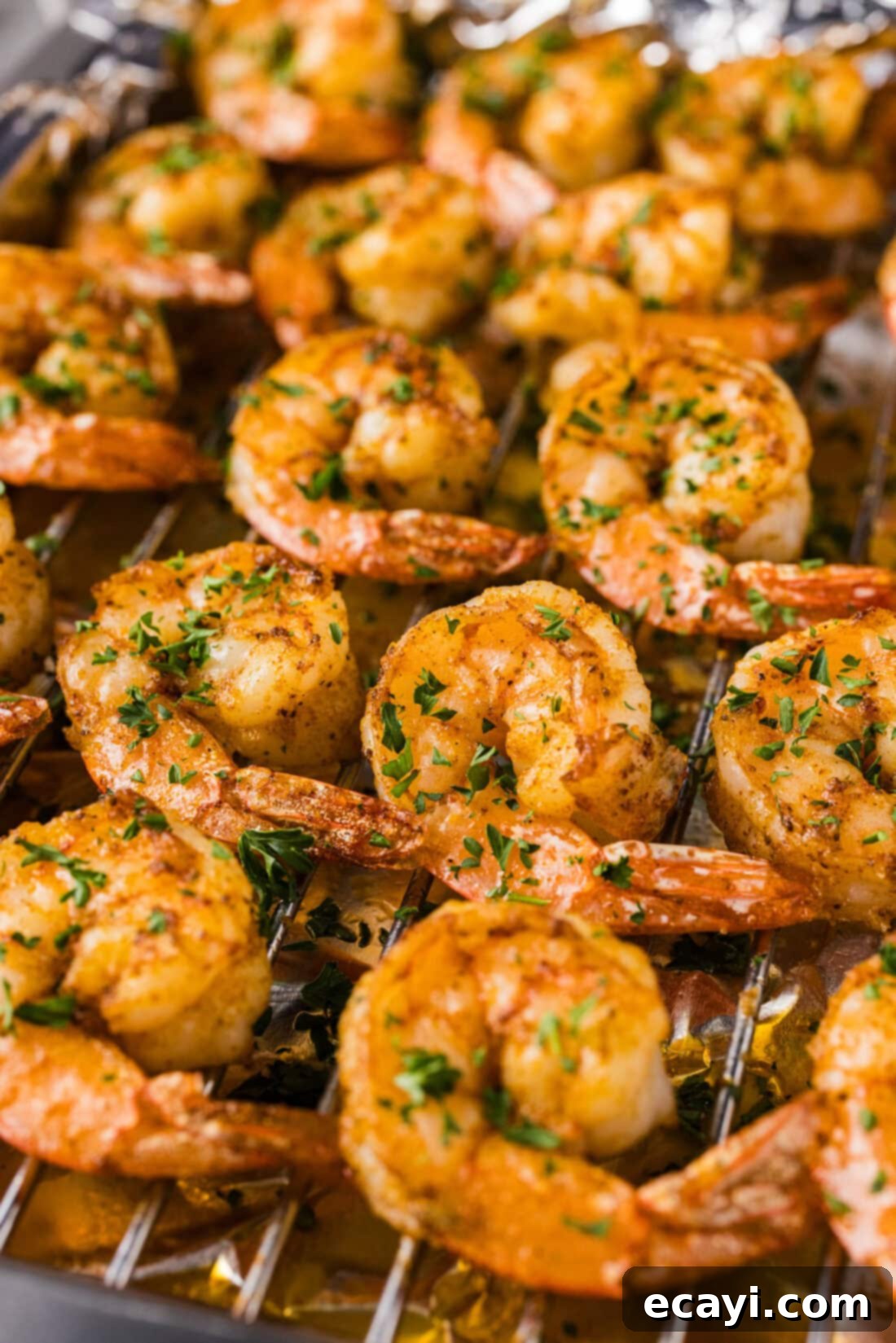
Delicious Serving Suggestions for Broiled Shrimp
The versatility of broiled shrimp makes it a fantastic addition to countless meals and occasions. Served as an elegant appetizer, it’s perfect for parties when paired with delectable dipping sauces like creamy garlic butter sauce, classic cocktail sauce, a vibrant yum yum sauce, or a zesty remoulade sauce. For a main course, it transforms simple dishes into something special.
Here are some popular ways to enjoy your broiled shrimp:
- In Pasta Dishes: Toss the freshly broiled shrimp directly into a warm garlic butter pasta, a light lemon-herb pasta, or a creamy Alfredo for a quick and satisfying meal.
- Salads & Bowls: Add them as a lean protein to any green salad, grain bowl (like quinoa or rice), or a vibrant Mediterranean salad.
- Tacos, Fajitas & Burrito Bowls: Season them with a taco or fajita blend before broiling for an instant Tex-Mex feast. Serve in warm tortillas or over rice with your favorite toppings.
- Stir-fries: Add them at the very end of your vegetable stir-fry for a quick protein boost.
- With Sides: Serve alongside fluffy rice pilaf, roasted asparagus, sautéed spinach, or a crisp cucumber salad for a balanced and complete dinner.
The beauty is that you can easily switch up the flavor profile with different spices and seasonings to match any cuisine you’re craving. Enjoy the endless possibilities!
More Irresistible Shrimp Recipes to Try
If you’ve loved this broiled shrimp recipe, you’ll be thrilled to discover more of our favorite ways to prepare this fantastic seafood. Expand your culinary repertoire with these delicious ideas:
- Shrimp Pasta
- Steamed Shrimp
- Air Fryer Shrimp
- Blackened Shrimp
I genuinely love to bake and cook, and it brings me so much joy to share my kitchen experiences and perfected recipes with all of you! Remembering to come back each day for new culinary inspiration can be tough, which is why I offer a convenient newsletter delivered directly to your inbox every time a new recipe posts. Simply subscribe today and start receiving your free daily recipes, making it easier than ever to discover your next favorite meal!
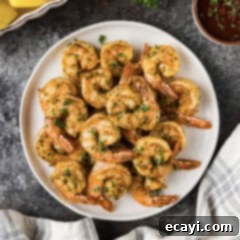
Broiled Shrimp
IMPORTANT – There are often Frequently Asked Questions within the blog post that you may find helpful. Simply scroll back up to read them!
Print It
Pin It
Rate It
Save ItSaved!
Ingredients
- 1 pound raw large shrimp peeled and deveined
- 1 teaspoon Old Bay seasoning
- 1 teaspoon onion powder
- 1 teaspoon paprika
- 1 teaspoon garlic salt
- 3 Tablespoons olive oil
Things You’ll Need
-
Mixing bowls
-
Baking sheet
-
Wire cooling rack
Before You Begin
- You can use frozen shrimp for this recipe, just be sure to thaw it first and pat it thoroughly dry with paper towels to ensure proper seasoning adhesion and broiling.
- We recommend large or extra-large shrimp (such as grilling shrimp or tiger shrimp) for this recipe, as their size helps them cook evenly and remain tender and juicy.
- Shrimp cooks very quickly, making it susceptible to overcooking. Perfectly cooked shrimp will curl into a loose ‘C’ shape and turn opaque with vibrant pink and red hues. Overcooked shrimp tends to turn a whiteish-grey and will be rubbery in texture. Keep a close eye on them during broiling to prevent this!
- For an extra layer of flavor and tenderness, you can marinate the shrimp for 15-30 minutes before broiling. Avoid marinating for too long, especially with acidic marinades, as this can toughen the shrimp.
Instructions
-
Preheat oven to broil. Position your oven rack 4-6 inches from the broiler element. Line a baking sheet with aluminum foil for easy cleanup and place a wire rack on top.
TIP – Elevating the shrimp on a wire rack over a baking sheet is essential, as it significantly improves air circulation, which in turn cooks the shrimp evenly and helps create that desirable slightly crisp exterior.
-
In a medium bowl, add all seasonings and olive oil, then whisk until thoroughly combined into a flavorful coating.1 teaspoon Old Bay seasoning, 1 teaspoon onion powder, 1 teaspoon paprika, 1 teaspoon garlic salt, 3 Tablespoons olive oil
-
Place the raw, peeled, and deveined shrimp in a large mixing bowl. Pour the prepared seasoning mixture over the shrimp.1 pound raw large shrimp
-
Using gloved hands (or clean hands), toss and gently coat the shrimp with the seasoning mixture until each piece is evenly covered.
-
Arrange the seasoned shrimp in a single layer on the wire rack over the prepared pan, ensuring not to overcrowd them. Leave some space between each shrimp for optimal broiling.
-
Broil for 5-7 minutes, keeping a close watch. The shrimp are cooked when they have curled up into a ‘C’ shape and turned opaque with pink and red hues. Remove immediately to prevent overcooking.
Expert Tips & FAQs
- Store any cooled leftovers in an air-tight container kept in the refrigerator for 2-3 days. Reheating shrimp can be tricky because you don’t want to overcook them in the process. I would recommend reheating them in a skillet over medium-low heat with a dash of oil until warmed through. The microwave tends to turn shrimp rubbery, so I would avoid that if possible.
- Don’t overcrowd the pan: For truly broiled (not steamed) shrimp, ensure there’s a single layer with space around each piece.
- Watch carefully: Broilers can cook very quickly and intensely. Stay close to the oven and check for doneness frequently to avoid overcooking.
- Pat dry: Whether fresh or thawed, thoroughly patting the shrimp dry with paper towels removes surface moisture, allowing the seasoning to adhere better and promoting a crispier exterior.
- Experiment with seasonings: Don’t hesitate to customize the seasoning blend to suit your taste. Try lemon pepper, Cajun spices, or a simple garlic and herb mix.
Nutrition
The recipes on this blog are tested with a conventional gas oven and gas stovetop. It’s important to note that some ovens, especially as they age, can cook and bake inconsistently. Using an inexpensive oven thermometer can assure you that your oven is truly heating to the proper temperature. If you use a toaster oven or countertop oven, please keep in mind that they may not distribute heat the same as a conventional full sized oven and you may need to adjust your cooking/baking times. In the case of recipes made with a pressure cooker, air fryer, slow cooker, or other appliance, a link to the appliances we use is listed within each respective recipe. For baking recipes where measurements are given by weight, please note that results may not be the same if cups are used instead, and we can’t guarantee success with that method.
